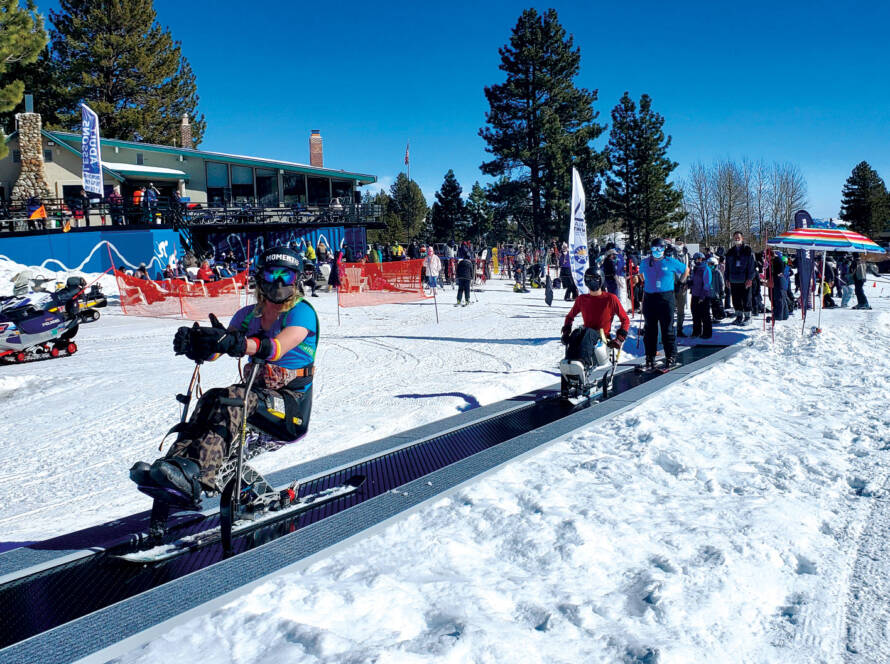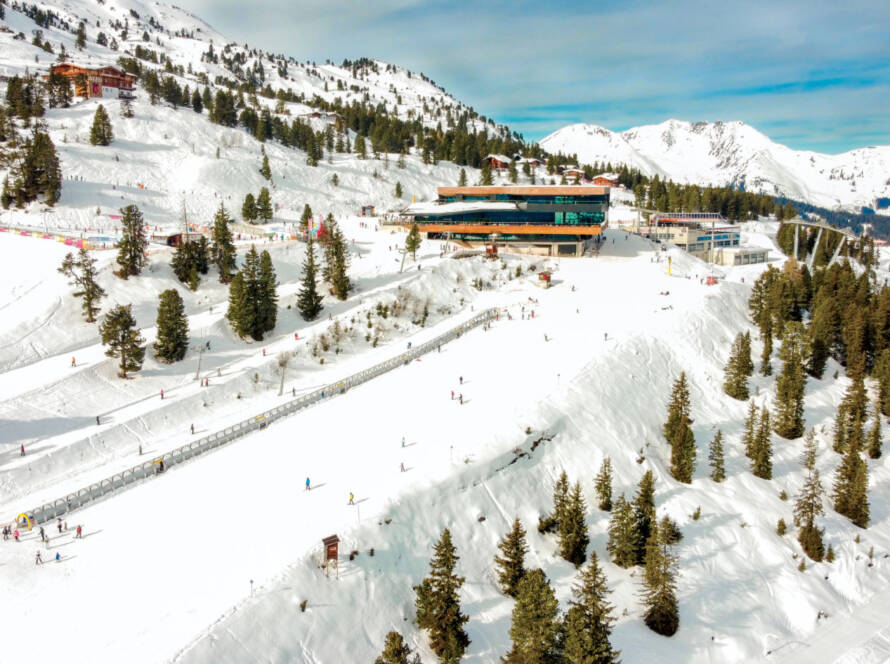If you’re offering a two-year course to teach people how run a ski hill, it might as well be taught in Colorado. The state is the site of the tallest of the Rocky Mountains (Mount Elbert), it’s the only state that is over a half-mile above sea level (in its entirety) and it’s the home of 53 of the Rocky Mountains’ 14,000 footers.
For added color, Colorado Mountain College’s (CMC) Ski Area Operations (SAO) program is run out of Leadville, the highest incorporated city in the United States. Leadville is surrounded by huge opportunity for any SAO student, in the form of many skiing facilities.
“We’re pretty spoilt that way,” said Cooper Mallozzi, dean, School of Hospitality, Tourism and Recreation at CMC, a portfolio which includes the college’s Ski Area Operations program. “Leadville itself isn’t home to a four-star resort. We have Ski Cooper here, which is a fantastic mom-and-pop-style area where you can park and walk to the base area, (something) which doesn’t really exist anymore…. That’s a good training resource, we partner with them, the students are out there grooming every Thursday and/or Friday night, assuming there’s enough snow.
“But then, yes, we have Copper and Vail and A-Basin (Arapahoe Basin) and Breck (Breckenridge) and Loveland and Beaver Creek – there’s a whole slew of them. So, yeah, we have quite a playground. And then we’re fortunate, too, to have the tubing hill and the ski team’s training slope right here behind campus.”
The college has cornered the market for this type of offering, at least in the Western U.S. The Ski Area Operations program has been taught, in one form or another, for at least 40 years, says Mallozzi; the only other similar course in the States is thought to be one offered through Michigan’s Gobegic Community College.
What the students are enrolled in is a two-year program which runs from September to early May, instructing them on all aspects of operating a hill, from snowmaking to vehicle maintenance to risk management and patrol to ski area design, grooming and management. There can be about 15 to 25 students per class, taught by two main instructors and a “handful of adjuncts,” who teach the specialty subjects. CMC is an open enrollment college, so there is no standardized testing or arduous application process and the school is very affordable, even for out-of-state students.
“CMC offers a tremendo us amount of scholarships,” said second-year SAO student Maddy Pierce. “I pay out-of-state tuition, so it’s a little more expensive. If you’re paying in-state, it pretty much costs nothing… there are so many scholarships that CMC offered that I applied for and it worked out really well to get those scholarships.”
Of course, there are academic requirements and a co-operative work experience component. However, alongside classroom time, there is a large emphasis on actual experience, a 50/50 split between classroom training and practical training.
Mallozzi points to new CMC instructor Brian Rosser, a graduate of the program himself, as well as a lawyer and a bit of a renaissance man when it comes to ski hills.
“Brian spent years doing lift stuff, whether it’s inspections as a risk management officer, or the actual operations, the service repair of those lifts,” said Mallozzi. “And so, every chance he gets to get the students into a gearbox or take apart a grip or something, he makes it happen, which is part of the experience, I think, what the students love so much about the program. Yes, they have to sit and listen for a bit but, by and large, they get to get their hands dirty, literally and figuratively, in terms of seeing how operations work.
So, when the Cat has a problem, they don’t send the Cat out or call in a repair specialist, unless it’s necessary. They turn it into part of the class. And the students are in there, re-greasing this, swapping out that and replacing another part. It’s hard to build a specific curriculum around that, because you never know what’s going to break. But that’s part of it.”
In terms of turning out qualified Ski Area Operations grads, there can be a bit of a built-in challenge. While the qualified grads are experienced, what the resorts are looking for depends on the resort itself.
“It’s a tricky market though because a lot of the areas want entry-level employees,” said Mallozzi. “Well, we’d like to produce folks that are earning a little more than bare minimum and have that upward mobility, you know – that those who want to stick to it can, in fact, turn the ski industry into a career. And that, I think, is a difference.”
With the SAO program, the college is looking to turn out highly trained, pre-qualified and cross-trained graduates, ones who tend to see a “sharp upward turn in their careers in years three to five.” SAO instructor Jason Gusaas points to the success story of one particular recent grad, a veteran who returned to school at CMC.
“He graduated and now has a risk management job at Loveland, in upper management, salaried,” said Gusaas. “We’re not just producing entry-level jobs.”
Another challenge to running such a program is keeping properly equipped, said Gusaas. However, there are a number of corporate believers who have been keen to help out, including Prinoth, SMI Snow Makers (with their Super PoleCat Snow Gun and associated equipment and software) and Snomax. (Sidenote: a recent SAO grad has become a Snomax sales rep.)
“One of the biggest challenges is the acquisition of equipment,” said Gusaas. “The equipment is expensive equipment, we’re talking about Snowcats $300,000 and higher. We have to emulate the industry as much as we can. Prinoth has given us a loaner Snowcat. They always bring us one of their newer machines. They see the benefit because students learn to use them at an important stage of their career.”
The program isn’t just attracting local students. Student Maddy Pierce is from pretty far away, upstate New York; her home range is the Adirondacks, rather than the Rockies, which is where she heard about the program.
“I had kept working for that same ski area and got really close to the owner and worked for him since I was 11,” she said. “I was kind of doing operations stuff with him, making snow and ski patrol and doing a lot of trail crew stuff and I didn’t know what I wanted to do after high school. And he said, ‘Hey, you know you can go to school for that stuff.’ And I was, like, ‘No way!’ I saw that there was a program in Colorado and so I looked it up and came out here and saw it. And I immediately fell in love with it as soon as I was here.”
Pierce is in her second year and has just started the co-operative work experience portion of the program, working at Copper.
“And it’s super cool because there’s that many of us, but we all kind of have similar goals,” she said. “I mean, we’re obviously all skiers and snowboarders so it’s cool because we can go ride together when we’re not in class. And a lot of us work together now that we’re second years; we’re supposed to get a job from November to April. So, I’m working with a couple of my classmates now. “I do snowmaking now, and when snowmaking’s done I’ll do grooming.”
Mallozzi notes that other graduates have found work abroad with their CMC-acquired skills. One grad now works in France, and occasionally, SAO students have chipped in with some other notable events. “There were a couple (former students) grooming over at the PyeongChang Olympics actually just last winter,” he said. “And so, some of the groomers get some pretty high-profile gigs going on”
Like any course of study, the SAO program is not set in stone; it is a work in constant progress, as trends and technology change in the recreation industry. To that end, the program’s advisory board helps.
“We’re required to have an advisory board which oversees and advises us on what we should be teaching, pros in the industry telling us what we need,” said Gusaas. “It’s not just us, it’s the industry asking us to provide.”
Said Mallozzi, “That’s been something we’ve been trying to do, some additional listening with our advisory board and the industry to determine just what skills are necessary in our graduates to give them the skills to perform the day-to-day operations, but also they have the know-how and the interpersonal skills and the technical skills to move up the industry and move through the ranks. If they’re so motivated and have that ability.”
Interestingly, summertime is perhaps figuring into the course’s future plans.
“The advisory board’s been really keen to push summer operations. Given that year-round scene certainly would benefit our students as well, so they could ideally get two seasons of work out of the deal and maybe even find salary positions,” said Mallozzi.
“We’re really starting to look at mini-excavator classes, where students are moving dirt and actually starting to carve and shape bike park features. We’re working on procuring some funding to obtain a bigger-sized mini-excavator of sorts, or ideally, two. We already have an equipment operation lab, where students are driving bulldozers and loaders, just to get familiar with the operation of those machines because it translates right into grooming… It’s a small subset, but we happen to have a great location and a place for students to pretty much dig around and make a mess in the dirt, with zero consequence… then they should be able to go out and find some work because a lot of places need skilled operators in those machines. And they don’t want them to come in at zero hours; if they get them at 30 hours, then they know the basics and they can kind of then learn the rest on the job. So, that’s a big, new area we’re exploring.”
In addition to all the technical, scientific and other skills that are taught through the program, there are other aspects which will ultimately assist grads in finding a destination. Maddy Pierce talks about conferences she’s attended through the college and people – from throughout the industry – who she’s met.
“Even more than just being satisfied with the classes and what they’ve taught me, the connections that I’ve made through CMC are just incredible,” she said.
On enthusiasm alone, Pierce has a promising future. However, having the industry buy-in as well is invaluable. Said Gusaas, “The industry appreciates the pre-qualified grads, they recognize that the person is invested and in it for the long haul.”



